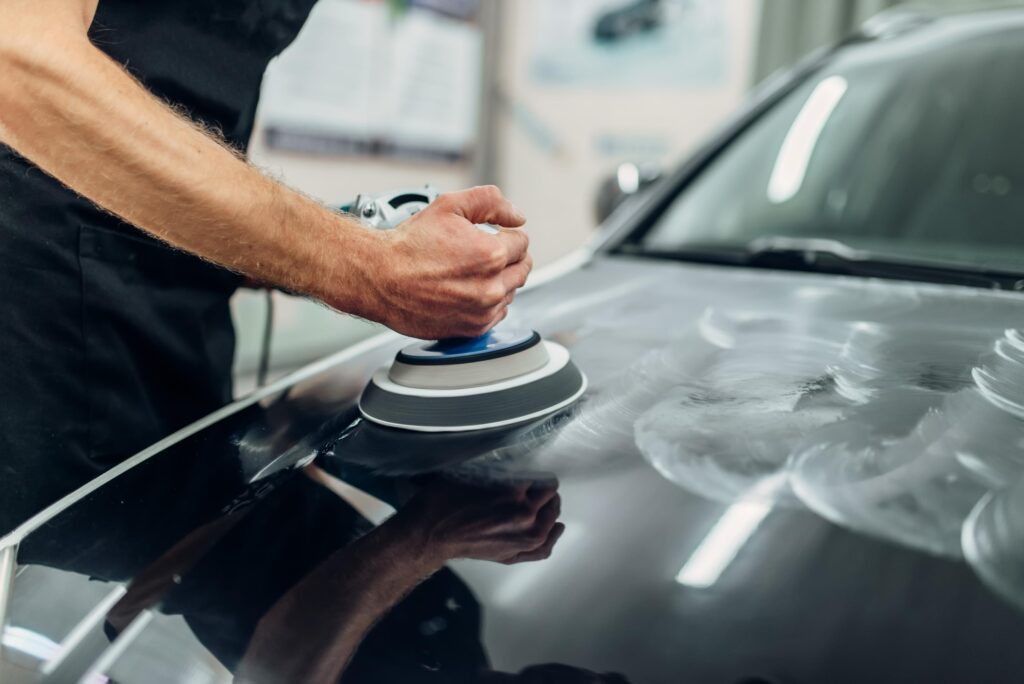Introduction to Car Paint Imperfections
Have you ever looked at your car under the sunlight and noticed faint lines or scratches ruining its once-perfect shine? These imperfections, often caused by daily wear and tear can make your vehicle look older and poorly maintained. Let’s dive into what causes these blemishes and how you can effectively remove them.
Understanding Scratches and Swirl Marks
Scratches and swirl marks are common paint imperfections that affect the aesthetic appeal of your car. While scratches are usually caused by sharp objects, swirl marks are often the result of improper washing techniques or the use of abrasive cleaning tools.
Causes of Paint Damage
From automatic car washes with harsh bristles to accidental bumps and environmental factors like bird droppings, your car’s paint endures a lot. Understanding these causes can help you better protect your vehicle.
Evaluating the Severity of Scratches
Not all scratches are created equal. Before diving into repair methods, it’s essential to determine the depth and severity of the damage.
Surface Scratches vs. Deep Scratches
Surface scratches only affect the clear coat and can be removed with simple polishing. Deep scratches, however, penetrate the paint layer and require more advanced techniques like touch-up painting or sanding.
The Fingernail Test for Scratch Depth
A quick way to evaluate scratch depth is by running your fingernail over it. If your nail catches, the scratch is likely deeper and may require professional attention.
Essential Tools and Materials for Scratch Removal
To tackle scratches and swirl marks effectively, you’ll need the right tools.
Polishing Pads and Compounds
Polishing pads paired with quality compounds can restore your car’s shine by smoothing out imperfections.
Microfiber Towels
These towels are a must for cleaning and buffing without adding new scratches.
Machine Polishers vs. Hand Buffing
While hand buffing works for minor blemishes, machine polishers are faster and more effective for extensive damage.
Step-by-Step Methods for Scratch Removal
Whether you’re a DIY enthusiast or a first-timer, these methods will help you achieve professional-grade results.
Method 1: Using a Scratch Removal Compound
How It Works
Scratch removal compounds contain abrasive particles that smooth out the surface of minor scratches.
Step-by-Step Application
- Clean the affected area thoroughly.
- Apply a small amount of compound to a polishing pad.
- Rub the pad in circular motions over the scratch.
- Wipe off excess product with a microfiber towel.
Method 2: Polishing and Buffing
Choosing the Right Polish
Select a polish designed for your car’s paint type to avoid unwanted damage.
Proper Buffing Technique
Buff the area gently, ensuring even pressure. Over-buffing can damage the paint layer.
Method 3: Wet Sanding for Deep Scratches
Tools Needed
Fine-grit sandpaper, a sanding block and a spray bottle of water.
Sanding Process
- Soak the sandpaper in water.
- Sand the scratch lightly, keeping the surface wet.
- Polish the area to restore the shine.
Method 4: Using a Touch-Up Paint Pen
When to Use Touch-Up Paint
This method is best for deep scratches that expose the metal layer.
Application Tips
Clean the area, apply the paint evenly and allow it to dry completely.
Preventing Future Scratches and Swirl Marks
Prevention is better than cure. Here’s how you can protect your car’s paint from future damage.
Washing Techniques to Avoid Swirls
Use a two-bucket method, soft microfiber mitts and avoid automatic car washes.
Importance of Ceramic Coating and Paint Protection Film
These protective layers act as barriers, reducing the chances of scratches and making maintenance easier.
Common Mistakes to Avoid During Scratch Removal
Even with the best intentions, mistakes can happen. Here are some to steer clear of:
Over-Polishing Risks
Excessive polishing can thin the paint, causing long-term damage.
Using Incorrect Tools or Products
Always research and invest in high-quality materials to prevent additional scratches.
Benefits of Professional Detailing for Severe Cases
Sometimes, DIY methods aren’t enough. Professional detailing can help.
What Professionals Can Offer
Experts like GlossZilla Car Detailing Studio use advanced tools and techniques to repair severe paint damage, ensuring a flawless finish.
Costs vs. DIY
While professional services may seem pricey, the results often justify the cost, especially for significant damage.
Conclusion
Scratches and swirl marks don’t have to ruin your car’s appearance. By understanding the causes and using the right techniques, you can restore your vehicle’s original shine. Whether you choose to tackle it yourself or seek professional help, maintaining your car’s paint will keep it looking new for years to come.
FAQs
1. Can all scratches be removed from car paint?
No, some deep scratches may require repainting or professional repair.
2. How long does it take to remove scratches?
Minor scratches can be fixed in under an hour, while deeper ones may take longer.
3. What’s the best product for DIY scratch removal?
Products like Meguiar’s ScratchX or 3M Scratch Remover are highly effective.
4. Is it worth investing in a ceramic coating?
Yes, ceramic coatings provide excellent long-term protection against scratches and environmental damage.
5. Should I consult a professional for deep scratches?
If the scratch exposes metal or is beyond the clear coat, it’s best to consult a professional.

